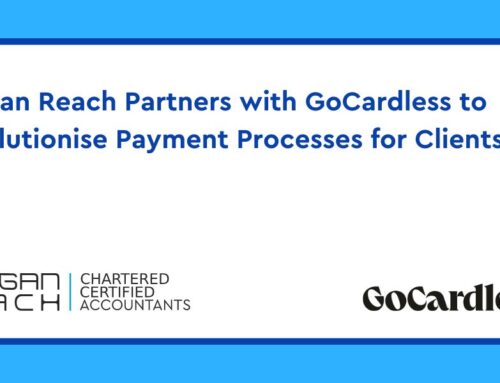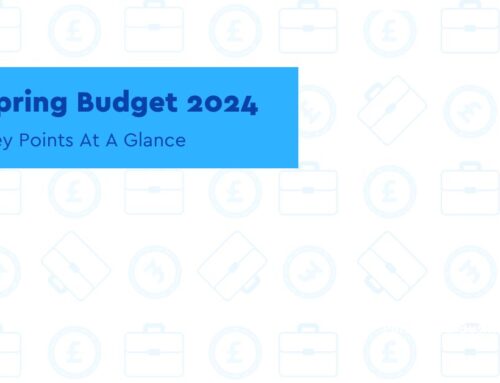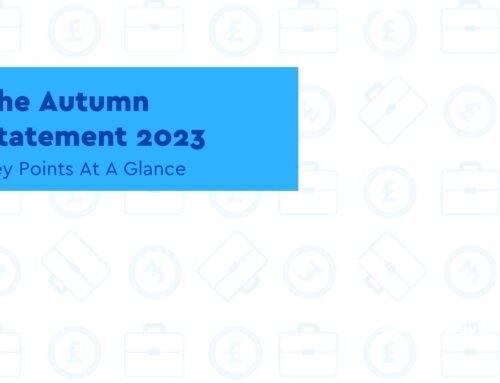News – Employers
Employers can now apply for an apprentice incentive payment
Key Points
- They will also need to have an apprenticeship start date from October 1, 2021 to March 31, 2022.
- You can apply from January 11 – May 15, 2022
Employers can now apply for a payment of £3,000 for new apprentices with an employment start date from October 1, 2021 to January 31, 2022.
It is the employer’s responsibility to apply for the incentive payment for hiring a new apprentice, using their apprenticeship service account.
When to apply
For apprentices with an employment start date from October 1, 2021 to January 31, 2022:
- You can apply from January 11 – May 15, 2022
- Apprentices must have an apprenticeship start date from October 1, 2021 to March 31, 2022.
Before you apply
- Check you are eligible to apply for the incentive payment.
- You need to have created an account on the apprenticeship service.
- You need to have hired a new apprentice. To be eligible, apprentices must have an employment start date from 1 October 2021 to 31 January 2022.
- If you do not pay the apprenticeship levy, before the training starts you need to have reserved funds in your apprenticeship service account or have arranged a transfer of levy funds.
- You need to have added your apprentice to your apprenticeship service account. This can be started by either the employer or the training provider but both need to agree the details before training begins.
- You need to have agreed a start date for apprenticeship training to begin with your training provider. To be eligible, apprentices must have an apprenticeship start date from 1 October 2021 to 31 March 2022.
How to apply
Once you have hired an apprentice and set up funding for training using the apprenticeship service, you can apply for the incentive payment.
- Sign in to your apprenticeship service account.
- In the ‘Finances’ section on the homepage, select ‘Your hire a new apprentice payments’.
- Select ‘Apply for the hire a new apprentice payment’.
- You’ll need to know the employment start date and apprenticeship start date for each apprentice you’re applying for.
- You will need to have your organisation’s finance details ready, if you have not entered them before as part of a previous application:
- Your legal name
- Registered address and contact details
- Companies House number (if you have one)
- VAT number (if you have one)
- Email address for the remittance
- Contact details for finance director or lead within your organisation
- Bank account details
- You will need to have signed the latest employer agreement. If you have not done so, you will see a notification with more information before you start the application.
- Follow the application process online:
- Check the eligibility criteria to see if you have eligible apprentices
- If you have apprentices who are eligible select ‘yes’
- From the list, choose which apprentices you wish to apply for
- Enter the employment start date for the apprentices
- Check the apprentice details and confirm
- Read the declaration then confirm and submit your application
- If you haven’t already, you can add the financial details
- View your saved applications
After you apply
Once these steps are complete you will be able to track the status of your incentive application using your apprenticeship service account.
HMRC will use confirmation from your training provider that training has started to calculate when the first (90 day) payment is due to be paid.
News – MTD for VAT
HMRC reminds businesses to prepare for MTD for VAT
Key Points
- MTD for VAT will become mandatory for smaller VAT businesses from April 1 this year.
- From April 6, 2024, self-employed people and landlords will be required to operate MTD if their turnover exceeds £10,000
Businesses should take steps to prepare for Making Tax Digital (MTD) for VAT before it becomes mandatory for all VAT-registered businesses, HMRC has said.
Designed to help businesses eliminate common errors and save time managing their tax affairs, MTD for VAT will become mandatory for smaller VAT businesses from 1 April this year.
MTD for VAT has been mandatory for VAT-registered businesses with a turnover of £85,000 or above since 1 April 2019 and in July 2020, it was announced all VAT-registered businesses would have to file VAT digitally from April 2022, regardless of their turnover.
HMRC is therefore urging businesses to explore digital record-keeping for VAT and choose the right MTD-compatible software to support their needs.
Joanna Rowland, HMRC’s director-general for transformation, said:
“Making Tax Digital is fundamental to the delivery of a trusted and modern tax system, making it easier for businesses to get their tax right and supporting the UK to go digital.
“By signing up for Making Tax Digital, we expect most businesses to experience long-term benefits, including reduced errors and time saved in managing their tax affairs.”
Mike Cherry, national chairman of the Federation of Small Businesses, agreed:
“It’s important that firms do all they can to get ahead of deadlines and access the affordable platforms that are now available.”
MTD – the basics
From April 6, 2024, self-employed people and landlords will be required to operate MTD if their turnover exceeds £10,000. This will mean keeping digital records and providing quarterly updates and an end of year declaration to HMRC through MTD-compatible software. This will apply to businesses being carried on before 6 April 2023.
Partnerships are being brought into the regime at a later date. For general partnerships, MTD for ITSA will apply from April 6, 2025. The date for more complex partnerships (such as limited liability partnerships) is yet to be announced. Similarly, there has been no update on the start date for MTD for corporation tax since HMRC previously stated that this will not be mandated before April 2026.
Talk to us about how to prepare for MTD for VAT.
News – Savings
Should the government reconsider the LISA penalty charge?
Key Points
- LISAs enable savers to contribute up to £4,000 per tax year with the government adding a 25% bonus
- Withdrawals for a purpose other than to buy a home or for retirement result in a 25% penalty charge
HMRC reclaimed £34m in Lifetime ISA (LISA) withdrawal charges in the 2020/21 tax year – a more than threefold increase on the previous tax year.
LISAs enable savers to contribute up to £4,000 per tax year with the government adding a 25% bonus (up to £1,000 a year).
If someone chooses to make a withdrawal from their LISA for a purpose other than to buy a home or for retirement, they are hit with a 25% penalty charge.
So someone who saved £4,000 and was given £1,000 by the government, who wanted to withdraw the full £5,000 would be charged a penalty of £1,250 (25% of £5,000).
Between March 6, 2020 and April 5, 2021 the government reduced the LISA withdrawal charge from 25% to 20% to allow people to access their money and only lose the government bonus.
After this time it returned to 25% despite the fact many people were still continuing to struggle financially as a result of the pandemic.
This has sparked calls for the government to reassess its decision to reinstate the 25% withdrawal charge in favour of keeping it at 20%.
There’s still a lot of pressure on the government to reconsider the charge, which means it’s an issue we could hear more about in the coming months. Otherwise, we could see another increase in the amount recouped by HMRC for the 2021/22 tax year.
News – Pension
Government launches state pension age review
Key Points
- The Pensions Act 2014 requires the government to regularly review state pension age
- State pension age is currently 66 and two further increases are currently set out in legislation
The government has launched the next review of the state pension age to see whether the way it manages the cost is fair to taxpayers and pensioners.
The review is the second that ministers have launched into changes to the state pension age.
It will consider whether the rules around pensionable age are appropriate, based on the latest life expectancy data and other evidence.
The Pensions Act 2014 requires the government to regularly review state pension age, and in accordance with law, this latest review must be published by 7 May 2023.
State pension age is currently 66 and two further increases are currently set out in legislation. These are a gradual rise to 67 for those born on or after April 1960, and a gradual rise to 68 between 2044 and 2046 for those born on or after April 1977.
The first review of state pension age was undertaken in 2017 and concluded that the next review should consider whether the increase to age 68 should be brought forward to 2037-39 before tabling any changes to legislation.
As the number of people over state pension age increases, due to a growing population and people on average living longer, the government says it needs to make sure that decisions on how to manage its costs are “robust, fair and transparent for taxpayers now and in the future”.
It must also ensure that as the population becomes older, the state pension continues to provide the foundation for retirement planning and financial security.
The review will consider a wide range of evidence including the implications of the latest life expectancy data, a balanced assessment of the costs of an ageing population and future state pension expenditure, labour market changes and people’s ability and opportunities to work over state pension age.
As set out in the 2014 Act, the government is commissioning two independent reports to contribute to the evidence considered during this review. These are a report from the government actuary and a report on other factors.
Our Latest Snippets
Weekly HMRC, Gov’t and tax updates
New rules to protect value of small pension pots laid in Parliament
New measures to protect small pension pots from being eroded by charges were laid in Parliament on Monday (January 10).
The rules, which come into force from April 2022, mean pension savings invested in the default funds of schemes used for automatic enrolment with a value of £100 or less will be exempt from flat fees, benefiting hundreds of thousands of savers across the country.
The Minister for Pensions, Guy Opperman, said more than 10 million people have been enrolled into a workplace pension, with an additional £28.4 billion per year being saved since 2012.
“By removing flat fees on pension savings worth less than £100, we’re protecting savers, particularly those who regularly take on short-term work or change jobs frequently, and helping them build for their financial futures,” he said.
Govt urged to reconsider NI social care tax hike
Prime Minister Boris Johnson has been urged to reconsider the coming hike in National Insurance (NI) contributions this April.
It is understood this arose during a cabinet debate on Wednesday last week ( January 5) where it was suggested the 1.25% increase should be ditched.
According to reports, this comes in the context of increasing energy prices and wider concerns about inflation. The government is facing challenges on several fronts from higher prices, supply shortages and the ongoing pandemic.
During PMQs, Johnson faced several questions about how his administration might intervene in energy markets.
Johnson announced a shake up of the social care system through a proposed levy on NI contributions last September.
Electronic payment deadline falls on a weekend
In January 2022, the electronic payment deadline of the 22nd falls on a Saturday. To make sure your payment for that month reaches HMRC on time, you need to have cleared funds in HMRC’s account by January 21, 2022 unless you are able to arrange a Faster Payment.
Remember that it’s your responsibility to make sure your payments are made on time and if your payment is late, you may be charged a penalty.
To know what date to initiate your payment and make sure we have it on time, you need to speak to your bank or building society well in advance of making your payment to check single transaction, daily value limits and cut off times.
Find out more information on paying your employer’s PAYE electronically.
Rising inflation is top concern for small businesses going into 2022
With rising inflation predicted by the Bank of England, and the threat of rising interest rates this year, nearly three quarters of small business owners (71%) cited inflation as their biggest concern regarding the economy going into 2022.
As energy, fuel and raw material prices rise, almost half of small business owners (46%) surveyed named increased running costs as a main concern for their business going into 2022.
And with the dual impact of Brexit and the pandemic disrupting global trade routes in the past year, a quarter of small business owners also expressed concern about how supply chain issues might affect their business.
The threat of further restrictions remains a worry for small businesses given the tough trading conditions, with 66% of small business owners citing additional Covid-19 measures as a key concern going into the new year.
Get In Touch
At Morgan Reach, we understand every business needs a little help now and again-especially when it comes to the financial side of things. Therefore, to help our clients and visitors we endeavour to cover as much of the business news as possible. If you are self-employed or run a business and need assistance and advice on how these news could make a difference to you or your business, feel free to get in touch with the experts at Morgan Reach. Our business growth experts at Morgan Reach will guide you through what support is available for you or your business as well as the latest news that may affect you.







